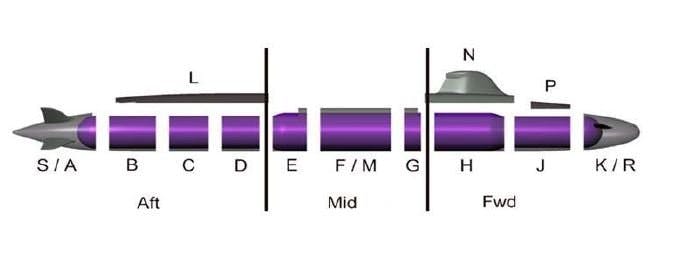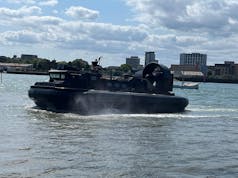A House of Commons briefing paper has detailed the progress made by the Dreadnought programme.
The paper, entitled ‘Replacing the UK’s Nuclear Deterrent: Progress of the Dreadnought Class’ is presented as an analysis of the programme and was published this week.
Construction of the first submarine formally began on the 5th of October 2016 with the cutting of the steel for the first submarine.
The submarines will be built in 16 units, grouped into three ‘mega units’ (Aft, Mid and Forward) in order to shorten the overall build timeframe says the research paper:
At present the number of people working directly on the programme is approximately 3,000 according to the paper. More than half of those are designers and engineers, it adds.
The programme as a whole is expected to support up to 6,000 jobs. The MoD is quoted in the paper as stating:
“The nuclear deterrent represents a significant national undertaking, which is drawing on cutting edge capabilities, innovation, design and engineering skills available in the UK, and is providing employment opportunities and development prospects for a substantial number of apprentices, trainees and graduates in a wide range of technical and other disciplines.”
The paper notes that it is unclear how much of the actual value of the overall programme rests with that 85% supply chain in the UK and how much will be spent overseas. To date BAE Systems has contracted for the specialised high strength steel required for the first submarine from a French supplier.
The use of foreign steel in the construction of the Dreadnought class has raised many questions over whether more can be done to promote the British steel industry within MOD programmes. In answer to a Parliamentary Question in October 2016 the then Minister for Defence Procurement, Harriet Baldwin, stated:
“The management of the steel procurement process for the Successor Programme is the responsibility of the Prime Contractor, BAE Systems. The Ministry of Defence’s involvement with suppliers was limited to conducting a technical assessment during the tendering process to ensure bids met specifications.
The tendering process was progressed and concluded by the Prime Contractor, no viable UK bid was received for this part of the Successor submarine manufacture. Other stages of construction will include grades of steel manufactured by British suppliers and I encourage them to take the opportunity to bid.”














This will be a very interesting project to follow, plus the cost and time savings being built into the programme from the start.
Why was no U.K. bid received? What has been done to remedy the situation?
Because no UK manufacturer makes the particular grade of steel required for that application.
What has been done to remedy the situation?
Nuclear weapons are useless as a deterrent against terrorism #NoShitSherlock
I notice that they are senior military officers, if senior Naval Officers were saying it then we should take note. A bit if self interest on their behalf.
Dear everyone, we can all see what is wrong with what TH is saying, no argument is needed to show him.
Have a nice day.
TH, that article was from 2009, from a time when we did not have a resurgent Russia or China looking to dominate the globe.
We definitely need nuclear weapons otherwise someone could wipe us out with theirs and we couldn’t do anything about it.
The Dreadnought class are also going to be Tomahawk capable, so if the decision is made they could also function as SSGNs when needed. While using the nuclear deterrent in conventional strike missions obviously has an inherent risk, it will also provide an overstretched fleet with more of the multirole capability we desperately need.